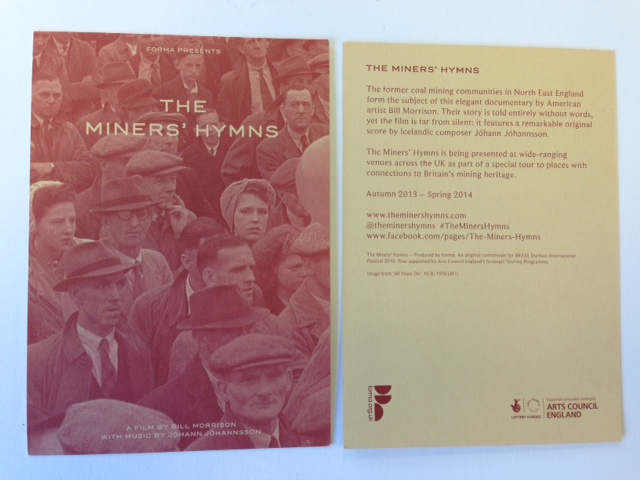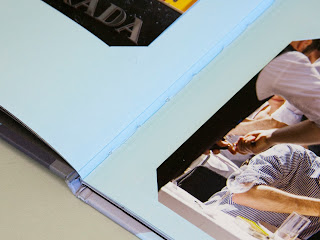 The Miners' Hymns is a film by American artist Bill Morrison, set in the former coal mining communities in North East England. The film is entirely without words, the soundtrack featuring an original score by Icelandic composer Jóhann Jóhannsson.
The film depicts the hardship of pit work, increasing mechanisation, the role of trade unions in organising and fighting for workers’ rights. The film uses archive footage from different eras spanning 100 years – from early footage of primitive conditions, through large scale mechanisation up to the miner's strike of 1984-5.
The Miners' Hymns is a film by American artist Bill Morrison, set in the former coal mining communities in North East England. The film is entirely without words, the soundtrack featuring an original score by Icelandic composer Jóhann Jóhannsson.
The film depicts the hardship of pit work, increasing mechanisation, the role of trade unions in organising and fighting for workers’ rights. The film uses archive footage from different eras spanning 100 years – from early footage of primitive conditions, through large scale mechanisation up to the miner's strike of 1984-5.The promotional literature consisting of flyers and cards. They are reminiscent in their look and feel of leaflets that were used when printing a leaflet to be handed out during large meetings and rallies was the only effective way to disseminate information to a large audience, rather than the social media of today.
Printed in just one colour, offset litho, they are printed on our Colorset (100% recycled) coloured range. The A5 flyers are printed on our Colorset Lemon 120gsm.
The A6 postcards are printed on Colorset, Sandstone 350gsm (also printed in one colour)
Design is by London design agency ARPA (A Research Projects Agency). The studio is run by creative partners Jasmine Raznahan and Ted Lovett.
The film is currently on a tour around the North east of England until the end of February and is supported by the Arts Council. Print is by Principal Colour.
http://theminershymns.com/
http://www.a-r-p-a.com/
www.principalcolour.co.uk
Posted by Justin Hobson 31.01.2014




































